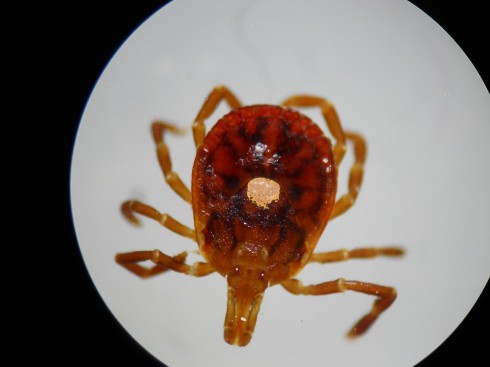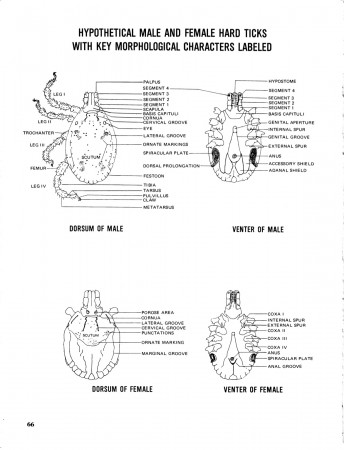While walking through the woods to recover the skeleton the other day, I picked up, or rather was boarded by, a few ticks. So when I got back to school I plopped them under the stereoscopes to try to identify them.

They were both lone star ticks (Amblyomma americanum): one adult and one juvenile.

Under the microscope, they were quite pretty with their very interesting red and black patterns.
Note:
Purdue’s extension service has an excellent reference page on basic tick anatomy and ecology for a lay audience, and Colonial Pest Control has a very readable overview of The Biology of Ticks (↬ Jay O.) that goes into their life cycles and how to deal with them.
Much greater detail can be found in the Tick Gross Anatomy Ontology, but the best reference I’ve found so far is the USDA’s Handbook (485): Ticks of Veterinary Importance (pdf). There you can find great anatomy diagrams and interesting biological and ecological information. One curious piece of information is that ticks can survive a long time (three years in one case) without a blood meal. It also includes some excellent diagrams:


Posted on my facebook page… timely post!